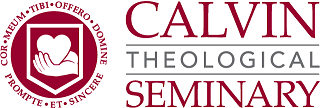Date of Award
2019
Document Type
Dissertation
Degree Name
Doctor of Philosophy (PhD)
First Reader
John Bolt
Second Reader
Ronald J. Feenstra
Third Reader
Mary L. Vanden Berg
Fourth Reader
Dirk Van Keulen
Abstract
Although Reformed pneumatology is generally recognized by scholars of Calvin and Reformed confessions to be relatively well developed compared to the various pneumatologies of the Western theological tradition, it faces two important challenges. First, Reformed pneumatology is directly linked to the critique that Reformed soteriology’s accentuation of predestination and effectual grace leads to inevitable fatalism that ignores human freedom. This is because the ministry of the Holy Spirit is crucial in the Reformed understanding of the order of salvation beginning with regeneration and ending with glorification. Second, because the ministry of the Holy Spirit is a key to understanding Reformed ecclesiology, and according to Reformed ecclesiology, the invisible church is a realization by the Holy Spirit and the Word of divine election, the criticism that the distinction in Reformed ecclesiology between the visible and the invisible church is a kind of Platonic dualism that justifies schism is also a problem that is directly linked to Reformed pneumatology. This dissertation responds to these two challenges against Reformed theology by using the pneumatology of Herman Bavinck as a case study. The point of this study is to grasp the answer to the question: “for Bavinck, is the work of the Holy Spirit clearly distinguishable from the work of Christ, and if so, what role does that work play in soteriology and ecclesiology?” This dissertation will show that Bavinck makes a clear distinction between the ministry of Christ and the ministry of the Holy Spirit and uses this distinction to demonstrate that the way the Holy Spirit applies salvatio n obtained by Christ to humans is fully compatible with human freedom since the work of the Holy Spirit is always persuasive, not coercive and operates in and through human nature without overriding it. Furthermore, it will show that, for Bavinck, the invisible but actual and ongoing application of salvation to the church by the Holy Spirit plays a key role in realistically understanding the invisible church by which he means the spiritual essence of the church, and the spiritual character of the marks and attributes of the church. In other words, to speak of the “invisible church,” Reformed theology is claiming nothing more than that the church of Jesus Christ is “spiritual.” The “spirituality of the church” is identical to the “invisible church.” To criticize the latter is to criticize the former. In this respect, the closer examination of Bavinck’s soteriology and ecclesiology from the viewpoint of his pneumatology that this dissertation carries out will provide an entry point to respond to the two criticisms mentioned earlier.
Recommended Citation
Tae, Dong-Yaul, "Human Freedom and the invisible Church From the Viewpoint of Bavinck's Pneumatology" (2019). CTS PhD Doctoral Dissertations. 49.
https://digitalcommons.calvin.edu/cts_dissertations/49



